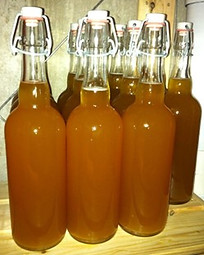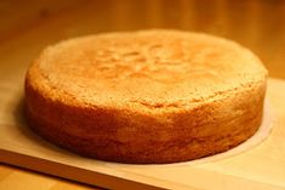
Roe Valley Beekeepers RVBKA
Based near Limavady, Northern Ireland
Email for Club: rvbkasecretarylhand@gmail.com
Email for Site: roevalleybeekepers@outlook.com
RVBKA Honey Shows
A chance for novice and experienced beekeepers to enter in a variety of classes including run, creamed, chunk, cut comb, sections, ling honey, wax, candles, jar for tasting, photography, artistry, honey cake and honey biscuits.
And have a delicious 3 course meal!
Rules, class categories, schedule and honey cake A27 and Honey Biscuit recipe A28 are all below.






Honey Show Winners

HONEY SHOW - SCHEDULE - RULES - CLASSES
ROE VALLEY BEEKEEPERS
34TH Annual Honey Show, Friday 3rd October 2025 at 7pm at Roe Park Resort, Limavady
Entries accepted (FOC) 3.30pm - 6.30pm
Judging 6.30pm Start
Welcome and Opening of Honey Show 6.30pm
Carvery Meal with tea and coffee £25
Entertainment Provided
Raffle and Auction
PRESENTATION OF PRIZES
Honey Show Manager: Sean O’Neill
Entry Recording Stewards: Denise McGowan, Linda Hand, Stephanie Percy, Norman Rowe and Dawn Smith
Stewards: Rickie McClelland, John Stewart, George McDonnald & Kieran Conway
Judges: Leo McGuinness, Will Jones & Michael Young MBE
Adjudicator: David McIntyre

HONEY SHOW SCHEDULE
H1. Six 454gm (1lb) jars of extracted honey (any type)
H2. Two 454g (1lb) jars of extracted honey (light)
H3. Two 454g (1lb) jars of extracted honey (medium)
H4. Two 454g (1lb) jars of extracted honey (dark)
H5. Two 454g (1lb) jars of ling heather honey
H6. Two sections of honey
H7. Two pieces of cut comb honey, each 200 – 255g (7 – 9oz)
H8. One deep or shallow frame of honey ready for extraction
H9. Two 454g (1lb) jars of chunk honey (approx.. 50% cut comb)
H10. Two 454g (1lb) jars of creamed honey
H11. One jar of honey for tasting only – in obscured jar
H12. A cake of beeswax - minimum 20mm thick and 340g weight
H13. Six beeswax blocks, matching in all respects
H14. Three matching plain beeswax candles
H15. Three matching decorative beeswax candles
H16. Three matching rolled beeswax candles
H17. Beekeeping artistry relating to bees/beekeeping, i.e. embroidery, candle, painting, honey pot etc. Must be made by exhibitor.
H18. Exhibitors honey jar label, conforming to UK regulations
H19. Competition gift class - full 227g (8oz) jar of honey.
N20. Under 16s: Beekeeping artistry as above
N21. Novice class: 1 454g (1lb) jar of extracted honey
N22. Novice class: 1 section of honey
N23. Novice class: 1 piece of cut comb 200 – 255g (7 – 9oz)
N24. Novice class: 1 jar of honey for tasting only, in obscured jar
A25. Photograph: Bee on a flower (2 entries per person only)
A26. Photograph: Beekeeping Activity (2 entries per person only)
A27. Honey Cake (7” round tin, see recipe)
A28. Six small honey biscuits baked to recipe provided in schedule
A29. One full bottle Mead, any type, 26fl oz (70cl) approx..
Supreme run honey (selected from classes H1,H2,H3,H4)
Best exhibition of show (produce of hive, Classes H1 – H13 & H19)
RVBKA member gaining highest aggregate points (produce of hive)
Novice gaining highest aggregate points (produce of hive)
Highest aggregate points – Open (produce of hive)
CLASS RULES
-
All beeswax exhibits (with the exception of rolled candles) must be the product of your own hive. Melted foundation will not be accepted.
-
The beeswax exhibit (H12) must be a plain, cast block of any shape, but of 340g (12oz) minimum weight, and of a minimum thickness of 25mm (1 inch) at its thickest point.
-
Extracted honey (H1,2,3,4,5,9,10 & N21) must be exhibited in clear glass 454g (1lb) jars, with matching screw or twist-off lids.
-
Honey colour will be judged using Honey Grading Glasses complying with B.S 1656.
-
Cut comb honey (H7, N23) can be shown in standard white plastic OR transparent 227g (8oz) cases with transparent snap-on lids. Gross weight per piece must be 200-255g (7-9oz).
-
Frames for extraction (H8) must have wired foundation, and must be shown in clear-sided protective cases, with both sides of the comb fully visible.
-
Sections (H6, N22) may be square or round, and exhibited in clear-sided cases with both sides of the comb fully visible.
-
Chunk honey (H9) should contain approximately 50% comb.
-
In classes where more than one item is requires (e.g. 6 jars extracted, 2 cut comb etc.) all individual items, both contents and containers, must match.
-
Mead (A29) must be shown in clear, colourless, slightly punted glass bottles with rounded, (not sloping) shoulders, and without lettering, fluting or ornamentation. Bottles must be corked with flanged stoppers which must be removable without the use of mechanical aid.
-
The photographic exhibits (A25, A26) must not exceed 30 x 21cm (A4 size), including the mount, if any.
-
Only two entries per person per class are allowed in the photo classes (A25, A26).
-
Bee Craft (H17) is open to all exhibitors.
-
Bee Craft (N20) is only open to those under 16 years of age.
-
H19: Competition jar 227gm (8oz), full jar to be gifted to club for fundraising. Can be purchased back from the club.
HONEY SHOW RULES
-
Staging of exhibits will be carried out exclusively by an appointed Steward.
-
Only Stewards or other designated Honey Show Officials are allowed in the staging area before and during staging and judging. All other persons, including exhibitors, guests and members of the public are excluded until judging has been completed and the results are announced.
-
Exhibits may not be touched except by a Steward or Judge, until they are returned to the owners after results are announced.
-
Exhibits must be product of the exhibitor’s own bees, or his/her own work.
-
Entries must be identified with the ID label supplied. No other identification mark is permitted.
-
Every component must be identified. The labels must be fixed as follows: Jars/Bottles – approx.. ½”(12mm) from bottom of vessel. Cut Comb - right hand end of long side of container; same for lid. Photo - top right hand corner of front. Optional: text under photo in the middle - a brief description. Other - top right of main body of container & the exhibit.
-
All classes are open except for the John Simpson, Arthur Rainey & Anne Turner Perpetual Cups, which are confined to paid-up members of the Roe Valley Beekeeper’s Association.
-
Exhibitors may make more than one entry in one class, but only one placement will be awarded to such an exhibitor in that class.
-
Photographic classes are restricted to two entries per class.
-
No single exhibit may be shown in more than one class.
-
For aggregate classes, points will be awarded for Product of the Hive classes: 1st Place 4pts 2nd Place 3pts 3rd Place 2pts Highly Commended 1 pt.
-
Novice classes are open to those who have never won a 1st, 2nd or 3rd in a honey class at any honey show. (A novice may, however, enter any other class, subject to Rule 7).
-
Judges & their family members may not enter in classes they are judging.
-
The Judges may: (a) Increase the number of awards in any class should the number or standard of entries merit it; (b) Withhold awards should the standard not be sufficiently high; (c) Submit any exhibit for analysis; (d) Disqualify any entry without giving reason.
-
The Referee, whose decision is final: (a) May receive an objection only on the day of the Honey Show, on receipt of a £20 deposit, which will be returned should objection be sustained; (b) Shall decide any questions of interpretation of these Honey Show Rules.
Preparing for a Honey Show
Main requirements: Hunger to win, patience & remember to read the rules.
Comb Honey
Start the season with new frames lightly vaselined
Face of comb should be proud of frame.
Sections
Make sure the section box and packaging are clean
Cut Comb
Make a cutting template using a plaster cast
Use heated sharp knives to cut. Drain before placing in the container. Check weight.
Run Honey
Before extraction remove propolis to remove crystalisation foci.
Extract light before medium before dark
Strain then filter. Use fine filter (100tpi)
Heat to 120 oF for 2-3 days then 140 oF to clarify. Not too long to avoid HMF
Bottling must be perfect in matching jars, with clean lids.
Avoid bubbling, debris and crystalisation
Chunk Honey
Chunk needs to be 50% cut comb, cells angled upwards (not sideways or inverted), no bubbles or
wax debris
Liquid honey should be clear with no crystalisation or pollen and from the same source as the
cut comb
Ling
Prepare by pressing. Use the right cloth to get correct bubble size and distribution
Is it 100% ling?, is there contamination with wax fragments, check weight.
Creamed
You’ll need 10% crystalising honey (eg OSR)blended with any light honey.
Strain then heat honeys seperately to 90oF overnight. Mix slowly together using eg a paint stirrer.
Make sure there are no bubbles. Leave for a day, then bottle. Problems are insufficient setting or
coarse crystal grain














Honey Cake Recipe - A27

Ingredients
250g clear honey
225g unsalted butter
100g dark muscovado sugar
3 large eggs, beaten
300g self-raising flour


Step 1
Pre-heat oven to 140 C Fan or 160 C or Gas mark 3.
Butter and line a 20cm/8 inch diameter round cake tin.
Chop butter and drop into a medium pan with the honey and sugar.
Melt over a low heat, when melted, increase heat and boil for 1 minute.
Cool for 15-20 minutes to avoid eggs curdling.
Step 2
Beat eggs into the coole, melted honey/sugar/butter liquid with a wooden spoon.
Sift flour into a large bowl and pour in egg and honey mixture, beating until you have a smooth, runny batter.
Step 3
Pour mixture into the cake tin and bake for 50 minutes - 1 hour (this time will vary depending on your oven) until well risen and golden brown. Test that the cake springs back when pressed and a skewer pushed into the centre comes out clean.
Step 4
Turn cake out onto a wire rack to cool.
Baking times may vary depending on your oven.

Honey Biscuit Recipe - Makes 6 - A28

Step 1
Pre-heat oven to 175 C or Gas mark 4.
Beat butter, honey and and sugar together in a bowl until the texture is creamy.
Ingredients
80g clear honey
120g unsalted butter
20g brown sugar
1 large egg yolk, beaten
180g self-raising flour
1 level teaspoon cinnamon

Step 2
Beat in the egg yolk.
Step 3
Add the cinnamon and flour and mix into a soft dough, adding more flour if dough is very sticky.
Step 4
Shape about a teaspoon of dough into a ball, roll in a little sugar and cinnamon and place on a greased baking tray.
Step 5
Bake for 12 to 15 minutes until golden brown.
Step 6
Let biscuits cool for a couple of minutes, then place on a wire rack or plate to cool completely.

